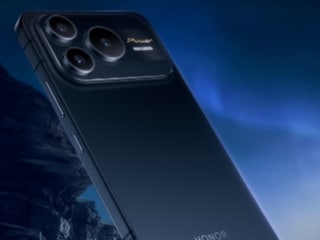- Home
- Internet
- Internet Opinion
- ChatGPT Is Also an Impressive Feat of Marketing
ChatGPT Is Also an Impressive Feat of Marketing
ChatGPT was released last November more as an experiment than as part of a well-thought-out campaign.

Photo Credit: Reuters
ChatGPT was released last November more as an experiment
ChatGPT is often cited as the most rapidly adopted consumer product of all time. Quite aside from its technological capabilities, the success of ChatGPT is an impressive feat of marketing — and I hope it heralds a new wave of campaigns based not on pandering but on authenticity.
ChatGPT was released last November more as an experiment than as part of a well-thought-out campaign. Its parent company, OpenAI — whose San Francisco headquarters I have visited — did not expect the service to take off as it did. The engineers, not the product managers, were the driving force. It was not all finely tuned to invoke warm fuzzy feelings of loyalty or affiliation.
Consider the name itself, ChatGPT. Many successful tech products have happy, shiny, memorable names: Instagram, Roblox, and TikTok. Someone comes up with the name, perhaps in a brainstorming session, and then it is taken to the broader world. With luck, it will prove sticky and continue to invoke a warm glow.
ChatGPT, as a name, does not have a comparably simple history. Originally the service was GPT-2, then GPT-3. GPT-3.5 was then released, and ChatGPT was announced in November 2022. ChatGPT-3.5 was cumbersome, and by that point it was running the risk of becoming obsolete numerically. So ChatGPT became the popular moniker. When GPT-4 was released in March, there was the chance to switch to just GPT-4 and treat ChatGPT as a kind of interim brand, connected with the 3.5 edition, but no — ChatGPT it is.
I still prefer to call it GPT-4, to make it clear which version of the service I am using. GPT-3.5 remains available for free and is widely used, and so my inner persnickety nag feels the two should not be confused. But they are confused, and almost everyone (present company excluded) just says ChatGPT. Again, this is not textbook marketing, but users seem fine with it.
At this point, you might be wondering what that GPT stands for. It is “Generative Pre-Trained Transformer.” How many of its users could tell you that? How many of its users could explain what it means? I can imagine a marketing team sitting around a conference table insisting that GPT is too opaque and just won't do.
But at OpenAI, software engineers and neural net experts are the dominant influences. So Americans get a name that has not been heavily market-tested and does not necessarily fit well into an advertising slogan. Maybe they like it, especially if they are sick of more and more of the economy being run by marketers.
I am reminded of MS-DOS, an earlier version of Microsoft's computer operating system. It came bundled with your machine, but it wasn't a consumer product in the same way that, say, Coca-Cola is. It was an engineering term, much like GPT. Engineering terms can be a good way of marketing things, so long as the product delivers on the technical side.
Product fragmentation is another feature of ChatGPT's history, and it doesn't seem to have hurt its popularity. Over the last several months there have been many products released, including GPT-3.5, GPT-4, Bing Chat (now with GPT-4 but until recently with 3.5), GPT plus (the paid service), API versions of GPT (available selectively to users who provide useful feedback), GPT plus with search (being rolled out in stages), and now a ChatGPT app for smartphones. The app is more powerful if you are a paying user, and the iPhone version is integrated with Whisper (voice recognition) in a way that the other GPTs are not. The various services have also had usage quotas and queuing limitations, with access rising steadily over time.
It all stands in contrast to the simplicity of many mainstream marketing plans. But it has worked. There is always a new version of the service to talk about, to covet, to compare with the old. Users feel as if they are witnessing, and can even influence, the evolution of a product.
If these GPT marketing innovations prove real and permanent, what else might consumers expect? Books with dull covers and no overly long SEO-optimized subtitles? NBA games with no halftime shows? TV commercials where a nerdy analyst talks about the actual merits of the product?
I, for one, am ready for this new America. And I promise, as I sing its virtues, not to be too slick about it.
© 2023 Bloomberg LP
Catch the latest from the Consumer Electronics Show on Gadgets 360, at our CES 2026 hub.
Related Stories
- Samsung Galaxy Unpacked 2025
- ChatGPT
- Redmi Note 14 Pro+
- iPhone 16
- Apple Vision Pro
- Oneplus 12
- OnePlus Nord CE 3 Lite 5G
- iPhone 13
- Xiaomi 14 Pro
- Oppo Find N3
- Tecno Spark Go (2023)
- Realme V30
- Best Phones Under 25000
- Samsung Galaxy S24 Series
- Cryptocurrency
- iQoo 12
- Samsung Galaxy S24 Ultra
- Giottus
- Samsung Galaxy Z Flip 5
- Apple 'Scary Fast'
- Housefull 5
- GoPro Hero 12 Black Review
- Invincible Season 2
- JioGlass
- HD Ready TV
- Laptop Under 50000
- Smartwatch Under 10000
- Latest Mobile Phones
- Compare Phones
- OPPO Reno 15 Pro Max
- Honor Win RT
- Honor Win
- Xiaomi 17 Ultra Leica Edition
- Xiaomi 17 Ultra
- Huawei Nova 15
- Huawei Nova 15 Pro
- Huawei Nova 15 Ultra
- Asus ProArt P16
- MacBook Pro 14-inch (M5, 2025)
- OPPO Pad Air 5
- Huawei MatePad 11.5 (2026)
- Xiaomi Watch 5
- Huawei Watch 10th Anniversary Edition
- Acerpure Nitro Z Series 100-inch QLED TV
- Samsung 43 Inch LED Ultra HD (4K) Smart TV (UA43UE81AFULXL)
- Asus ROG Ally
- Nintendo Switch Lite
- Haier 1.6 Ton 5 Star Inverter Split AC (HSU19G-MZAID5BN-INV)
- Haier 1.6 Ton 5 Star Inverter Split AC (HSU19G-MZAIM5BN-INV)

















